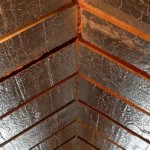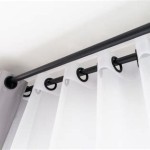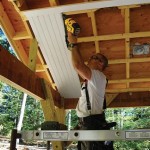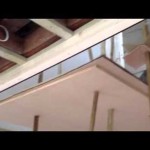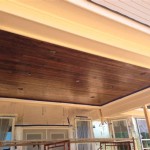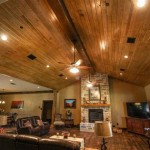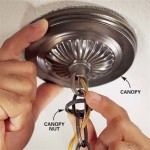Faux Tray Ceiling Ideas: Achieving Architectural Elegance Without Major Renovation
Tray ceilings, also known as inverted or recessed ceilings, add architectural interest and a sense of spaciousness to any room. However, the construction of a traditional tray ceiling can be costly and disruptive, involving significant structural modifications. Faux tray ceilings offer an aesthetically pleasing alternative, replicating the look of a tray ceiling without the extensive remodeling. These solutions range from simple paint techniques to more elaborate construction methods, allowing homeowners to enhance their interior design without a major overhaul.
The appeal of a tray ceiling lies in its ability to draw the eye upwards, creating an illusion of height and volume. This effect is particularly beneficial in rooms with lower ceiling heights, where a traditional tray ceiling might not be feasible. Faux tray ceilings provide a cost-effective and less intrusive way to achieve a similar visual impact, contributing to a more sophisticated and airy ambiance.
Paint Techniques for a Faux Tray Ceiling Effect
One of the simplest and most affordable methods for creating a faux tray ceiling is through the strategic use of paint. This technique involves painting a rectangular area on the ceiling in a lighter or darker shade than the surrounding surface. The painted rectangle mimics the recessed area of a traditional tray ceiling, creating a visual separation and adding depth to the room. Careful color selection and precise execution are crucial for achieving a convincing and aesthetically pleasing result.
When choosing paint colors, consider the existing décor and the desired mood of the room. Lighter shades generally enhance the sense of spaciousness, while darker shades can add warmth and drama. A subtle contrast between the painted rectangle and the surrounding ceiling can be more effective than a stark difference, creating a refined and understated effect. It is also important to consider the natural and artificial lighting in the room, as this can significantly influence the perceived color and depth of the faux tray ceiling.
The application process requires careful planning and execution. The first step is to accurately measure and mark the desired dimensions of the faux tray ceiling on the ceiling. Use painter's tape to create clean, sharp lines, ensuring that the rectangle is perfectly symmetrical and aligned with the room's architecture. Apply several thin coats of paint, allowing each coat to dry completely before applying the next. Once the paint is dry, carefully remove the painter's tape to reveal the finished faux tray ceiling.
Variations on this technique include adding a border or molding around the painted rectangle to further enhance the illusion of depth and dimension. This can be achieved by using decorative trim or simply painting a thin line in a contrasting color along the edges of the rectangle. Another option is to incorporate a textured paint or faux finish within the painted area to add visual interest and tactile appeal.
Using Molding and Trim for a Faux Tray Ceiling
A more elaborate approach to creating a faux tray ceiling involves the use of molding and trim. This method provides a more three-dimensional effect, closely resembling the appearance of a traditional tray ceiling. Molding and trim can be installed around the perimeter of the ceiling to define the recessed area, adding architectural detail and visual interest to the room. This technique is particularly effective in rooms with higher ceilings, where the added dimension can create a more dramatic impact.
Several types of molding and trim can be used to create a faux tray ceiling, including crown molding, cove molding, and chair rail. Crown molding is typically installed at the intersection of the wall and ceiling, creating a decorative transition and adding a touch of elegance. Cove molding is similar to crown molding but has a more rounded profile, providing a softer and more subtle effect. Chair rail is typically installed horizontally along the walls, but it can also be used on the ceiling to create a layered effect and add depth to the faux tray ceiling.
The installation process requires careful planning and precise execution. The first step is to measure and cut the molding and trim to the desired lengths. Use a miter saw to create clean, accurate angles for the corners. Apply construction adhesive to the back of the molding and trim and press it firmly against the ceiling. Use finishing nails to secure the molding and trim in place, ensuring that it is properly aligned and level. Fill any nail holes with wood filler and sand smooth before painting or staining the molding and trim.
Variations on this technique include adding multiple layers of molding and trim to create a more elaborate and dimensional effect. This can be achieved by installing a layer of crown molding followed by a layer of cove molding, or by using a combination of different types of molding and trim. Another option is to incorporate decorative medallions or other architectural elements into the design of the faux tray ceiling to add visual interest and character.
Innovative Materials and Techniques for Faux Tray Ceilings
Beyond paint and molding, a range of innovative materials and techniques can be employed to create visually stunning faux tray ceilings. These methods often involve incorporating lightweight materials and creative design elements to mimic the depth and complexity of a traditional tray ceiling. These advanced techniques allow for greater customization and can create a truly unique and impressive ceiling design.
One popular option is the use of lightweight faux beams. These beams, typically made from polyurethane or other synthetic materials, can be installed to create the illusion of structural support and add a rustic or contemporary touch to the room. Faux beams are relatively easy to install and can be painted or stained to match the existing décor. They can be arranged in various patterns to create a custom faux tray ceiling design, adding depth and visual interest to the room.
Another innovative technique involves the use of fabric panels. Fabric panels can be stretched across a frame and attached to the ceiling, creating a soft and elegant effect. The fabric can be chosen to complement the existing décor and can be easily replaced to update the look of the room. Fabric panels can also be used to conceal unsightly ceiling features, such as pipes or ductwork, while adding a touch of sophistication to the space.
Furthermore, textured ceiling tiles offer another avenue for creating a faux tray ceiling effect. These tiles, available in a variety of patterns and materials, can be installed within a defined area on the ceiling to mimic the recessed look of a tray ceiling. The textured surface of the tiles adds visual interest and can help to absorb sound, improving the acoustics of the room. They are relatively easy to install and can be a cost-effective way to transform the appearance of a ceiling.
Finally, the integration of lighting can dramatically enhance the effect of a faux tray ceiling. Recessed lighting, strategically placed within the "tray" area, can emphasize the depth and create a warm and inviting ambiance. LED strip lighting, installed along the edges of the faux tray ceiling, can provide a soft, ambient glow and highlight the architectural details. The careful selection and placement of lighting can elevate the faux tray ceiling from a simple design element to a stunning focal point in the room.
These various methods, whether simple paint techniques or more involved construction with molding and innovative materials, offer homeowners a wide range of options for achieving the desired aesthetic of a tray ceiling without the expense and disruption of major structural renovations. By carefully considering the existing décor, the desired mood, and the available budget, it is possible to create a faux tray ceiling that enhances the beauty and value of any home.

What Do You Think About This Faux Tray Ceiling Or Some Variation Of It Then Only Pa Traditional Living Room Bedroom False Design Modern

How To Create A Faux Tiered Ceiling

Tray Ceiling Ideas Decorative Tiles Inc

Faux Coffered Ceiling Confessions Of A Serial Do It Yourselfer

Tray Ceiling Ideas Decorative Tiles Inc

Tray Ceiling Painting Ideas

Tray Ceiling Designs South Florida Painting Company Wall Street Arts

Excellent Plaster For Walls And Ceilings Art Faux Wall Designs Tray Ceiling Decor Painted

The Ultimate Guide To Tray Ceilings Archways

Easy Diy Coffered Ceiling Idea Simple Low Profile Design Steps And Abbotts At Home
Related Posts

